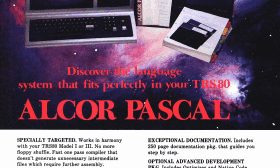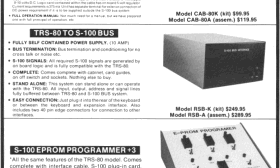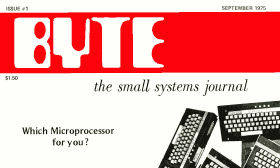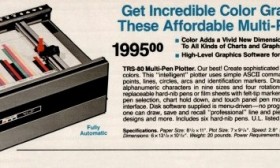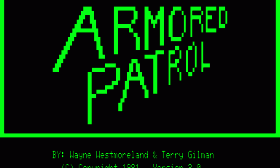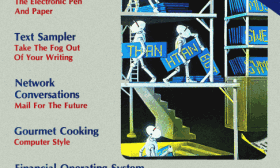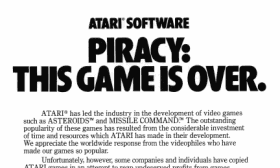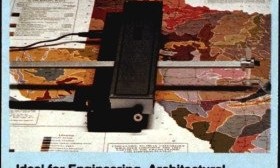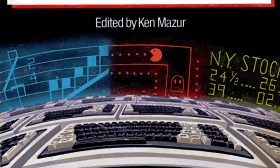In the early days of microcomputers, many considered learning Pascal to be the logical next step for beginning programmers after learning BASIC. Alcor Pascal, sold by Alcor Systems of Garland, Texas, was a “complete Jensen and Wirth Standard Pascal” and a popular choice for TRS-80 users who wanted to expand their programming horizons.
In addition to the TRS-80 versions (which cost $199.00), Alcor Systems also sold Alcor Pascal versions for CP/M (including the Apple II with the Microsoft CP/M SoftCard) and later on for MS-DOS computers. Starting in 1983, Radio Shack began selling licensed versions of Alcor Pascal for the Model I/III (catalog number 26-2211) and the Model 4 (catalog number 26-2212). Both versions cost $249.95
Alcor Pascal had its origins in 1978 as a Pascal compiler for CP/M systems, a history that was detailed in the first issue of the Alcor Systems Newsletter in 1982:
(Read more...)
In March 1979, a company named World Power Systems began running multi-page advertisement in many popular computer magazines, including
Byte,
Creative Computing,
Interface Age, and
Kilobaud Microcomputing. World Power Systems, founded by Jim Anderson, advertised a number of interesting and unusual products for the TRS-80 and S-100 computers at prices that seemed almost too good to be true. As it turned out, they were too good to be true; Jim Anderson was actually a prison escapee named Norman Henry Hunt and World Power Systems was an elaborate scam that ended up costing customers and suppliers hundreds of thousands of dollars.'
(Read more...)
The original TRS-80 Microcomputer System, later known as the TRS-80 Model I, shipped with Level I BASIC when it was introduced on August 3, 1977. An improved Level II BASIC written by Microsoft was announced at the time but was released some time later.
Radio Shack used four different versions of the Level II ROM over the lifetime of the Model I, even though the part number (26-1120) remained the same. Radio Shack never officially named the ROM versions, or even acknowledged the existence of any version other than the last, so the names used were created by users.
(Read more...)
BYTE: The Small Systems Journal was one of the longest running computer magazines and also one of the most popular. It was published from September 1975 to July 1998 and at one point in the 1980’s was the largest magazine in the country. In addition to the United States version, there were also twenty licensed editions of BYTE published in other countries.
BYTE was described by editor Carl Helmers in the premiere issue as “a monthly compendium of information for the owners and users of the new microcomputer systems becoming widely available at moderate cost.” It began at the start of the microcomputer revolution, even before mass-marketed computers were widely available, but also spanned into the age of the Internet and the World Wide Web.
(Read more...)
The TRS-80 Multi-Pen Plotter (catalog number 26-1191) was similar to the earlier TRS-80 Plotter/Printer (catalog number 26-1190), but offered one important new feature: the ability to print in color. Described as an “intelligent plotter,” the Multi-Pen Plotter used replaceable colored pens to print on paper or transparencies. Even at a price of $1995.00, the Multi-Pen Plotter was cheaper than many other color output alternatives available at the time. In fact, the catalog description states that the Plotter “brings an affordable price to color graphics!”
(Read more...)
Armored Patrol was one of the most popular TRS-80 games, described by Owen Linzmayer in Creative Computing as “a classic in every sense of the word.” It was distributed by Adventure International and written by Wayne Westmoreland and Terry Gilman, the first of their games for the TRS-80. Unlike their other Adventure International games, Armored Patrol was never ported to any other computers.
Armored Patrol was based on the arcade game Battlezone, released by Atari in 1980. Battlezone used vector graphics to depict a tank battle with a first-person 3‑D view, a real innovation at the time. The player controlled a tank that could rotate 360 degrees. The goal was to destroy the enemy tanks that could be anywhere on the battlefield, even behind the player. Other obstacles were pyramids, which could block the enemy tanks, and even the occasional UFO.
Here is an overview of Armored Patrol from a 1982 Adventure International catalog:
(Read more...)
SoftSide was a popular computer magazine that covered multiple computer platforms, including the TRS-80, Apple II, Atari, Commodore 64, and IBM PC. But when Roger Robitaille published the first issue in October 1978, SoftSide focused on only one computer: the TRS-80 Model I.
That first issue, which identified itself as “your BASIC software magazine,” began with this statement:
There are those who might say we’ve got rocks in our heads for starting another computer magazine in the first place. We even wondered about it ourselves—but only for a minute.
Personal computing has taken a new direction. The technological wonder of the early ‘70’s has come out of the basement workshop and into the living room. People are coming to look upon the computer less as the ultimate machine, the hobby in itself, and more as the tool, the medium, the vehicle for the real stars—our ideas and imagination.
Our intention is to publish software—and lots of it, free for the transcription. Every month we will offer programs for business, games, programs with household applications, even educational programs for children that will allow your home computer to become the educational aid we always knew it could be. Our content will be as diverse and unique as our featured program’s writers.
(Read more...)
In late 1981, Atari began running an unusual full-page advertisement titled “Piracy: This game is over.” It appeared in several computer magazines, including InfoWorld, BYTE, Creative Computing, and SoftSide. Atari also sent copies to a number of software publishers. The advertisement read:
ATARI has led the industry in the development of video games such as ASTEROIDS and MISSILE COMMAND. The outstanding popularity of these games has resulted from the considerable investment of time and resources which ATARI has made in their development. We appreciate the worldwide response from the videophiles who have made our games so popular.
Unfortunately, however, some companies and individuals have copied ATARI games in an attempt to reap undeserved profits from games that they did not develop. ATARI must protect its investment so that we can continue to invest in the development of new and better games. Accordingly, ATARI gives warning to both the intentional pirate and to the individuals simply unaware of the copyright laws that ATARI registers the audiovisual works associated with its games with the Library of Congress and considers its games proprietary. ATARI will protect its rights by vigorously enforcing these copyrights and by taking the appropriate action against unauthorized entities who reproduce or adapt substantial copies of ATARI games, regardless of what computer or other apparatus is used in their performance.
(Read more...)
The TRS-80 Digitizer (catalog number 26-1195), available in November 1981, provided a way to digitize maps, blueprints, and charts in an era before document scanners were affordable or commonly available. The Digitizer, which measured 2¼″ by 15½″ by 4¼″, cost $449.00 and connected to the TRS-80 Model I or Color Computer through the cassette port or to other TRS-80 models through the RS-232 port. (Oddly, the Model III couldn’t be connected through the cassette port like the Model I.)
The manual described the concept behind the TRS-80 Digitizer:
What exactly is a digitizer? Basically, it’s a device that describes a specific point on a sheet of paper in terms of its X-Y (Cartesian) coordinates. For example, if you didn’t have a Digitizer and you wanted to describe the location of a particular point on an 8 1/2" X 11" sheet of paper, you would need to measure how far from the left edge that point is, then how far from the top edge it is.
A digitizer does this for you. It tells you how far horizontally (the X-axis) and how far vertically (the Y-axis) that point is from the edge of the paper.
(Read more...)
Creative Computing was one of the longest running of the early microcomputer magazines, publishing from 1974 to 1985. Unlike most later microcomputer magazines, Creative Computing covered the entire range of personal computers, including the TRS-80, Atari, and Apple.
In 1983, Creative Computing Press published three books collecting computer-specific articles from the pages of Creative Computing. They targeted each book at a different computer market: The Creative Atari, The Creative Apple, and The Creative TRS-80.
The Creative TRS-80, edited by Ken Mazur with a preface by Creative Computing Associate Editor John J. Anderson, has over 100 articles and reviews from Creative Computing.
(Read more...)
